Community News
Expats history in Tianjin: Changing traffic in Tianjin
By Andrea Klopper (Jin Magazine)
Updated: 2012-06-12
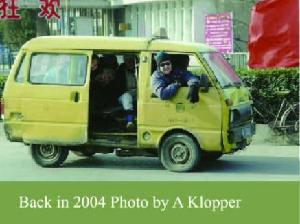
There are some of us who may still remember the old yellow 'mìan bāo chē' that plied Tianjin roads in the days when cars were fewer and bicycles more numerous. Taxis were affordable, unlike back in the 1980s when they were rare and costly. Today there are not only newer taxis and many more cars but a much greater variety of cars, not to mention the bigger SUVs and sporty numbers. But traffic looked much more different some a hundred years ago….
Back in the 1890s, the two most popular forms of transport were rickshaws and carriages. The Peking and Tientsin Times mentions both.

Carriages were regulated, as are taxis today. A column gives an example of some of the regulations: if plying for hire, they had to be licensed and registered with the Municipal Council which limited the number of carriages, pay a tax of $1.00 per month, be regularly inspected and carry lighted lanterns between sunset and sunrise. Carriages were expected to keep on the left hand side of the road and pass other carriages going in the same direction on the right – the British system for roads was adhered today rather than the European or American! Some articles decried the state of the roads such as one noting that the Taku Road (now Dagu Lu) :
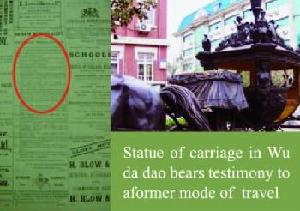
"…is almost impassable after a shower, and at the present moment carts and rickshaws have to wade through a rocking quagmire for several hundred yards !!!" (Peking and Tientsin Times, August 1, 1896 – exclamation marks in the original!)
The road was subsequently remade but surprise was expressed at the total lack of drains which would mean that in the winter
"…The sun's rays beating on a road covered with snow will, in the course if a few hours, convert it into slush, and the heavy carts &c, traversing to and fro soon form deep ruts in the road, thus leaving it, after a few snowstorms, in practically the same condition as it was some weeks ago." (Peking and Tientsin Times c.August 1986)
Another problem found on the roads is mentioned:
"A short time ago a suggestion was made in our columns that bicyclists should be careful when riding through the settlements or on the race Course Road, but, from all appearances, the hint has not been taken. Common sense, surely, tells one that to wheel along a none-too- wide road at a break-neck pace, where people are always horse-back riding and sometimes shying ponies, is anything but sensible." (Peking and Tientsin Times October 3, 1896).
A longstanding form of transport was the rickshaw. In 1900, congested Tianjin roads looked like this:
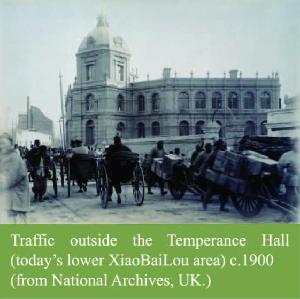
There were periodic strikes by the rickshaw 'coolies'. They were the ones doing the work but their rickshaws were generally owned by a few people and competition for work was keen. When the monthly tax was increased by the British Municipal Council from $0.50 to $0.75 in 1896, they stopped work and the streets "had the feel of Chinese New Year" so empty were they (editorial Peking and Tientsin Times 1996). Settlement was clearly reached and rickshaws contributed to urban development in Tientsin providing transport for many and employment for large numbers of workers.
Brian Power remembered in the 1920s his grandmother having her own rickshaw coolie and a private rickshaw with brass lamps on the sides and a bell that you could press with your foot. He recounted going to church in a rickshaw:
"On the way home it was warmer and the rickshaw coolie ran with his shirt tied round his waist. You could see the beads of sweat trickling down his back. At out gate my other paid him ten cents.” (1984:37"
Writer Adeline Mah's grandmother, in the 1940s, also had a private rickshaw, black and shiny:
"It had inflatable rubber tyres, a brass lamp on each side and a bell operable by foot as well as hand. Every morning Ah Mao [the rickshaw puller] could be seen sweeping the seat, washing the sides, brushing the canopy and polishing the brass." (1999: 13)

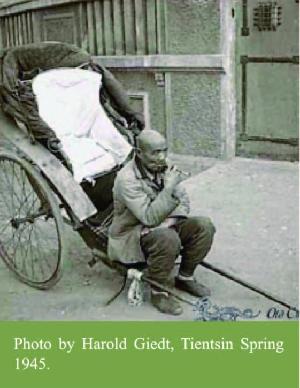
February 1906 had seen a Belgian company introduce China's first city-wide electric tram in Tientsin. Tracks were placed down the middle of many roads and by 1933, 116 tramcars were running. As public buses took to the roads in the 1930s providing more up-to-date service, smoother rides and competition for road space, the tram service was phased out by 1972.

By the 1920s, cars were making their appearance – in the newspaper advertisements of the day as well as on the roads. It was felt public safety was becoming more of an issue. The Municipal gazette drew attention of car owners and drivers to "the increasing necessity of observing police signals in order to avoid inconveniences and danger. …signals and instructions, whether in the matter of slowing or stopping at cross roads or parking outside places of entertainment, must be implicitly obeyed". (Peking and Tientsin Times 1922). The need was proven by various accident reports. By the 1930s, there were local dealerships, as shown by the presence of Ford:
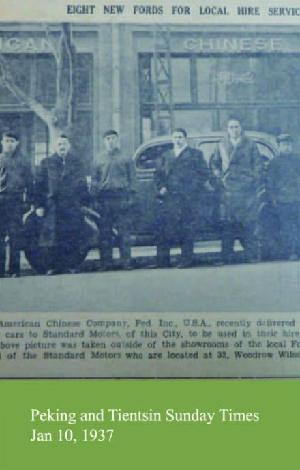
While rickshaws gradually disappeared (outlawed in 1948 as symbols of working class oppression) and bicycles predominated, Tianjin roads are now clogged with cars in a way few could have imagined and many of the matters that were being raised in the past echo down time.
Bibliography:
Power, Brian (1984) The Ford of Heaven.
Yen Mah, Adeline (1999) Chinese Cinderella.
